27 Oak Tree Varieties That Elevate Landscaping
Oak trees stand as towering sentinels of strength and beauty in landscapes across the globe, commanding respect with their robust presence and timeless elegance.
These magnificent woody perennials have long captured the imagination of gardeners, landscapers, and nature enthusiasts with their impressive stature and distinctive characteristics.
Deciduous and evergreen varieties showcase remarkable diversity, representing a rich botanical heritage that spans continents and ecosystems.
Their expansive canopies provide shelter for countless wildlife species, creating intricate ecological networks that sustain complex environmental systems.
The majestic bark textures, deeply lobed leaves, and iconic acorn productions contribute to their extraordinary visual appeal and botanical significance.
Oak trees represent more than just botanical specimens; they embody cultural symbolism, historical importance, and natural resilience that transcends geographic boundaries.
Within this comprehensive collection, readers will discover an amazing compilation of twenty-seven extraordinary oak tree varieties that promise to transform any landscape into a breathtaking natural masterpiece.
Chapman Oak Tree (Quercus Chapmanii)
Chapman oak dazzles landscape enthusiasts with its remarkable winter charm, standing strong when other plants fade into dormancy.
Southern coastal regions embrace this distinctive tree, which reaches impressive heights around 30 feet.
Stunning autumn colors transform its branches into golden and crimson displays that capture attention.
Medicinal properties add unexpected value to its already impressive profile.
Resilient characteristics allow this oak to flourish in sandy soil conditions.
Unique leaf-shedding patterns ensure the tree maintains visual interest through changing seasons.
Native to U.S.Southern territories, Chapman oak provides both aesthetic and functional benefits for outdoor spaces.
Botanical enthusiasts appreciate its adaptability and natural beauty that enriches any landscape design.
Golden Oak Tree (Quercus Alnifolia)
Golden oak trees captivate nature lovers with their distinctive green leaves sporting vibrant yellow undersides, creating a stunning visual appeal.
Cyprus mountains originally nurtured this remarkable species, which flourishes in sunny, dry landscapes and withstands temperatures plummeting to minus 1 degree.
Charming shrub-like growth patterns make these trees perfect for gardens seeking unique botanical additions.
Oval-shaped leaves not only enhance its aesthetic charm but also serve as a critical habitat for local wildlife.
Delicate flowers become magnets for butterflies and birds searching for sweet nectar, adding dynamic energy to any landscape.
Acorn production follows traditional oak tree patterns, further enriching the tree's ecological significance.
Wildlife enthusiasts appreciate how these trees provide year-round natural beauty and ecological support.
Willow Oak Tree (Quercus Phellos)
Willow oaks tower majestically among landscape trees, commanding attention with their impressive height and distinctive foliage.
Needle-like leaves resemble those of willow trees, creating a unique visual profile that sets them apart from traditional oak varieties.
Autumn brings a spectacular color transformation, with leaves turning golden yellow and rusty brown before gently drifting to the ground.
Wind easily carries these lightweight leaves away, reducing yard maintenance for homeowners.
Small acorns nestle beneath leaf clusters, ensuring the tree's reproductive cycle continues smoothly.
Landscapers and nature enthusiasts appreciate the willow oak's adaptability and aesthetic appeal.
Native to southeastern United States, these trees thrive in various soil conditions and provide excellent shade.
Their remarkable resilience makes them a popular choice for parks, gardens, and urban landscapes.
White Oak Tree (Quercus Alba)
White oak trees command attention with their majestic presence and impressive stature.
Massive trunks can expand to 6 feet wide, showcasing remarkable strength and endurance through decades of growth.
Dense wood allows these trees to withstand powerful storms and harsh wind conditions without breaking.
Distinctive rounded tops create eye-catching silhouettes that make white oaks stand out in any landscape.
Expansive canopies offer generous shade with intriguing natural openings that add character to their appearance.
Slow growth patterns mean these trees develop gradually, rewarding patient observers with incredible beauty.
Native forests often feature white oaks as dominant species due to their robust nature.
Landscape designers appreciate these trees for their ability to create stunning, long-lasting natural environments.
Blackjack Oak Tree (Quercus Marilandica)
Blackjack oak delivers amazing barbeque wood that burns intensely hot, making outdoor cooking a delightful experience.
Standing around 50 feet tall, this distinctive tree catches your eye with its nearly black trunk and sprawling branches.
Dense canopies offer refreshing shade during scorching summer days.
Rectangular leaves create a unique silhouette that captures attention, especially when they spread wide at their tips.
Autumn brings a dramatic color shift as foliage explodes into stunning yellows and passionate reds.
Warm earthy tones with rusty highlights follow the initial burst of color, creating a visual feast for nature lovers.
Identifying this oak becomes simple with its distinctive trunk and branch structure.
Outdoor enthusiasts and landscape admirers appreciate the blackjack oak's remarkable characteristics and natural beauty.
Chestnut Oak Tree (Quercus Montana)
Chestnut oak trees rise magnificently to 145 feet, commanding attention with their impressive stature.
Distinctive bark creates bold ridges in reddish-gray tones that catch your eye across woodland landscapes.
Mountain oak species boast unique leaf shapes with rounded edges and delicate serrations that add visual intrigue to their silhouette.
Rapid acorn development marks another fascinating trait, transitioning from vibrant green to rich brown within a single year.
Native forests showcase these majestic trees as silent guardians of ecological diversity.
Rugged bark and sturdy branches signal remarkable resilience in challenging environments.
Woodland ecosystems depend on chestnut oaks for critical habitat and food sources.
Nature enthusiasts appreciate these trees as living testaments to forest strength and beauty.
Coast Live Oak Tree (Quercus Agrifolia)
Majestic coast live oaks dominate California's shoreline with remarkable presence, reaching astonishing heights up to 80 feet.
Sprawling canopies create dramatic shade landscapes that captivate anyone nearby.
Unique twisting branches weave intricate patterns across surrounding terrain, making these trees incredible natural sculptures.
Evergreen leaves maintain rich green colors throughout winter months, ensuring continuous visual appeal.
Native ecosystems rely on these magnificent trees for critical habitat and environmental stability.
Oak roots dig deep into coastal soils, providing essential ground strength and erosion protection.
Mild temperatures enable consistent growth and robust health for these remarkable trees.
Local wildlife depends on coast live oaks for shelter, food, and ecological balance.
Mirbecks Oak, Algerian Oak (Quercus Canariensis)
Mirbeck oak stands out as a magnificent tree native to Morocco, Spain, and Algeria, reaching incredible heights between 80 and 100 feet tall.
Its massive trunk can expand to an impressive 5 feet wide, making a dramatic statement in any landscape.
Unique greenish-blue leaves create a stunning visual appeal that captures attention instantly.
Remarkably adaptable, this oak thrives in warm regions with ample sunlight and mild temperatures.
Unlike many tree species, it remains evergreen in comfortable climates without harsh winters or extended dry periods.
Botanical enthusiasts appreciate its resilience and striking appearance in natural settings.
Mediterranean regions particularly showcase the tree's natural beauty and strength.
Shingle Oak Tree (Quercus Imbricaria)
Shingle oaks stand out as remarkable trees native to North America, particularly thriving in Illinois's cold regions.
Belonging to the red oak family, these trees boast distinctive oval-shaped leaves that set them apart from typical oak varieties.
Dark, thick, and incredibly tough, their foliage creates a dramatic landscape throughout seasonal transitions.
Fall brings a stunning color palette of reds, yellows, and browns that dance across branches even into winter months.
Unlike many deciduous trees, some shingle oak leaves maintain their colorful presence long after other trees have gone bare.
Red oak family members typically grow modest in size, with shingle oak trunks reaching impressive widths up to 3 feet.
Their resilience in challenging climates makes them a favorite among landscape enthusiasts and nature lovers.
Unique characteristics ensure these trees remain a captivating addition to any natural setting.
Shumard Oak Tree (Quercus Shumardii)
Shumard oaks stand out as remarkable landscape trees with their impressive height reaching 60 feet and a distinctive pyramidal shape that captures immediate attention.
Urban spaces benefit greatly from these adaptable trees that flourish in sunny locations and require minimal maintenance.
Unique serrated leaves provide visual interest throughout the growing season, especially during autumn when they transform into stunning red and orange hues.
Delicate catkins precede acorn development, adding another layer of seasonal charm to this extraordinary oak variety.
Their moderate size makes them perfect for smaller yards and gardens where space is limited.
Native to southeastern United States, Shumard oaks offer natural beauty and ecological value to landscaping designs.
Branches spread gracefully, creating a balanced and elegant silhouette against the sky.
Wildlife enthusiasts appreciate these trees for attracting birds and supporting local ecosystem diversity.
Bur Oak (Quercus Macrocarpa)
Majestic bur oaks command attention with their towering presence, reaching incredible heights over 100 feet and creating expansive canopies of dense green.
Weathered bark tells stories of decades, displaying deep black grooves that hint at the tree's incredible age and resilience.
Massive leaves stretch beyond 9 inches, featuring distinctive rounded lobes that provide intricate texture and character to this woodland giant.
Distinctive acorns resemble small chestnuts, growing more than one and a half inches long and signaling the tree's reproductive power.
Woodland creatures depend on these robust trees for shelter and sustenance, making bur oaks crucial ecosystem contributors.
Native to North American landscapes, these trees thrive in diverse environments from open prairies to dense forests.
Their thick trunks and impressive stature make them natural landmarks in any terrain.
Bur oaks represent strength, endurance, and natural beauty in their most authentic form.
Chihuahua Oak (Quercus Chihuahuensis)
Chihuahua oaks stand out with their distinctive smooth brown bark and fascinating connection to Mexico's landscape.
Native to regions ranging from 1,300 to 6,600 feet above sea level, these remarkable trees offer unique botanical characteristics.
Small but mighty, they rarely grow beyond 33 feet in height and produce fascinating acorns that support local ecosystems.
Fuzzy pistils decorate their leaves, creating an unusual visual texture that botanists appreciate.
Named after both the Mexican state and the tiny dog breed, these oaks belong to the broader beech family.
Their adaptability makes them resilient in challenging environments.
Botanical enthusiasts find Chihuahua oaks particularly interesting due to their specialized growth patterns.
Wildlife and local plant communities benefit from the tree's presence in its native regions.
Swamp White Oak Tree (Quercus Bicolor)
Swamp white oak stands out among trees with its expansive, sprawling branches and unique bark that catches your eye.
Belonging to the beech family, this remarkable oak produces distinctive acorns and thrives across the United States.
Water-loving landscapes welcome its presence, especially areas with good drainage and oxygen-rich soil.
Landscapers appreciate its adaptability and resilience in diverse environmental conditions.
Timber producers value the tree for its sturdy wood and multiple practical applications.
Nature enthusiasts admire its ability to spread wide and create impressive canopies.
Careful placement matters, since prolonged flooding can potentially damage its growth potential.
Canyon Live Oak Tree (Quercus Chrysolepis)
Canyon oaks stand as majestic trees with remarkable adaptability, thriving in rocky California landscapes near streams and springs.
Their impressive height can reach 100 feet, creating expansive canopies that stretch outward with impressive breadth.
Native environments help these oaks demonstrate incredible resilience and strength in challenging terrain.
Distinctive acorn clusters provide both visual interest and nutritional value for local wildlife and humans.
Surprisingly versatile, canyon oaks can grow as compact shrubs or develop into towering woodland sentinels.
Botanists appreciate their unique ability to flourish where other trees might struggle, showcasing remarkable environmental endurance.
Landscape designers often select these oaks for their natural beauty and robust character.
California ecosystems benefit significantly from the canyon oak's presence, supporting diverse ecological interactions.
Black Oak Tree (Quercus Velutina)
Black oak trees captivate nature lovers with their dramatic deep-red autumn colors across North American landscapes.
These resilient trees boast rough bark and distinctive rounded leaves that catch the eye of woodland wanderers.
Acorns develop slowly, taking up to two years to mature and create a stunning seed display on each branch.
Their flowering season spans mid to late spring, releasing clouds of pollen into the surrounding environment.
Remarkably adaptable, black oaks can grow successfully in multiple soil conditions, including clay and silt terrains.
Native wildlife depends on these trees for critical food sources, particularly small mammals and birds.
Foragers appreciate the fact that black oak acorns are edible and nutritious when properly prepared.
Naturalists consider black oaks essential members of complex forest ecosystems, providing crucial habitat and sustenance for numerous species.
Persian OakBrants Oak Tree (Quercus Brantii)
Brant's oak, a powerful tree from Western Asia, towers up to 100 feet with incredible strength and resilience.
Surviving harsh droughts, this remarkable species maintains robust growth in challenging environments.
Distinctive wide acorns and delicate leaf clusters give the tree a stunning visual appeal that captures attention.
Botanists appreciate its adaptability in high-altitude regions with consistent air circulation.
Holistic medicine practitioners have long valued its unique medicinal properties for healing purposes.
Native to mountainous landscapes, Brant's oak contributes significant ecological benefits to its surrounding ecosystem.
Geographic regions with challenging climates provide perfect conditions for this extraordinary tree to flourish.
Researchers continue studying its remarkable characteristics, recognizing its potential for environmental and medicinal applications.
Scarlet Oak Tree (Quercus Coccinea)
Scarlet oaks command attention with their majestic pyramidal shape and towering height of 80 feet.
Winter brings dramatic deep purple and scarlet hues that elevate landscape design.
Sunlight becomes this oak's best friend, requiring just six hours daily to flourish magnificently.
Surprisingly adaptable, these trees grow well even in less-than-ideal soil conditions.
Landscape designers appreciate how easily these trees maintain their impressive stature without complex maintenance.
Nature lovers will marvel at the oak's ability to create visual drama throughout seasonal changes.
Hardy and resilient, scarlet oaks stand as stunning natural monuments that transform outdoor spaces with minimal effort.
Overcup Oak Tree (Quercus Lyrata)
Overcup oaks reign supreme in forest landscapes with their impressive 70-foot height and robust canopy.
Distinctive reddish-brown bark tells a story of maturity and strength across woodland settings.
Fall brings magical yellow leaves that dance across the landscape, creating breathtaking natural displays.
Wildlife finds sanctuary in these remarkable trees, with numerous animals enjoying the nutritious acorns they generously produce.
Small gardens and expansive fields benefit from the oak's elegant shade and natural presence.
Sturdy leaves contribute to the tree's resilience and visual appeal throughout changing seasons.
Native ecosystems depend on overcup oaks as critical components of balanced environmental networks.
Forest dwellers and nature enthusiasts appreciate these magnificent trees for their ecological significance and stunning visual characteristics.
Water Oak (Quercus Nigra)
Water oak towers majestically across coastal landscapes from New Jersey to Texas, reaching impressive heights of 100 feet with remarkable grace.
Native to moist southern regions, this quercus nigra flourishes in swampy environments where other trees struggle to survive.
Dense blue-green leaves create a lush canopy that maintains its rich color in warmer climates, almost resembling an evergreen.
Lower elevations provide ideal conditions for its robust growth and development.
Waxy leaf textures highlight the tree's unique botanical characteristics.
Its tall, elegant form brings dramatic visual interest to landscapes and natural settings.
Landscape designers appreciate water oak's ability to thrive in challenging environmental conditions.
Boynton Sand Post Oak Tree (Quercus Boyntonii)
Boynton oaks command attention with their distinctive rusted-tint leaves that persist through multiple seasons, creating a stunning visual impact in landscapes.
Garden enthusiasts appreciate these remarkable trees for their unique appearance and resilience.
Members of the quercus family, these oaks stand out among similar shrubs with their remarkable coloration.
Height ranges typically reach around 12 feet, though some specimens can grow even taller under ideal conditions.
Their foliage maintains an intriguing rusty hue that blurs seasonal transitions, keeping gardens interesting throughout the year.
Native to regions across the United States, Boynton oaks provide landscape designers with a reliable and eye-catching option.
Botanical experts recognize these trees for their adaptability and distinctive leaf characteristics.
Northern Red Oak Tree (Quercus Rubra)
Northern red oak trees emerge as spectacular landscape additions with distinctive personalities that set them apart from other woodland residents.
Their leaves burst into stunning crimson displays during autumn, creating breathtaking visual experiences for nature lovers.
Rapid growth characterizes these remarkable trees, expanding approximately 2 feet annually during their early years.
Strong sunlight and consistent water supplies help these majestic plants develop robust root systems and healthy structures.
Mature specimens can develop massive trunks measuring up to 10 feet wide, showcasing their impressive potential.
Individual trees might adopt rounded or pyramidal shapes, ensuring each one looks uniquely elegant.
Adaptable and resilient, Northern red oaks flourish in various environments across different regions.
Landscapers and homeowners prize these trees for their remarkable beauty and substantial environmental contributions.
Japanese Evergreen Oak Tree (Quercus Acuta)
Japanese evergreen oaks stand out with their distinctive gray bark and unique olive-colored leaves that shimmer with a yellow underside.
Quercus acuta reaches impressive heights around 45 feet, making it a spectacular garden centerpiece for landscape designers.
Martial arts practitioners appreciate its dense wood for crafting practice weapons.
Clusters of delicate catkins emerge before acorns develop on this Asian oak species.
Smooth bark texture creates visual interest in any outdoor setting.
Oval-shaped leaves add elegant dimension to the tree's overall appearance.
Native to specific Asian regions, this oak variety belongs to a diverse botanical family.
Small nuanced details make this tree a remarkable addition to gardens seeking something extraordinary.
Evergreen Oak Tree (Quercus Ilex)
Holm oak trees boast remarkable resilience against pests and diseases, making them exceptional landscape choices for long-term greenery.
Hardy specimens can spread branches up to 21 feet wide, creating impressive natural canopies that provide excellent shade and visual interest.
Sunlight plays a crucial role in their development, with well-drained soil supporting robust growth and overall tree health.
Careful early nurturing ensures these evergreen oaks establish strong root systems and maintain their vigor over decades.
Mature trees demonstrate incredible adaptability, effortlessly withstanding dry conditions and challenging environmental pressures.
Their rounded crowns offer elegant silhouettes that enhance garden landscapes and urban spaces.
Natural defenses help holm oaks survive where other tree species might struggle, highlighting their exceptional genetic strengths.
Consistent care rewards gardeners with stunning, long-lasting green companions that gracefully weather changing seasons.
Ajo Mountain Scrub Oak Tree (Quercus Ajoensis)
Mountain scrub oak captivates landscapers with its distinctive holly-like leaves and compact branches that create dense, eye-catching clusters.
Native to California's diverse terrain, this hardy plant thrives at high elevations and adapts beautifully to challenging environments.
Its unique growth pattern sets it apart from traditional oak trees, remaining low and bushy instead of towering skyward.
Wildlife find shelter among its intricate branches, making it a valuable ecosystem contributor.
Small acorns dot the branches, each tiny enough to balance on a fingernail's edge.
Seasonal changes highlight its dynamic character, with leaves shifting colors throughout the year.
Nature lovers marvel at how this remarkable plant survives in rugged landscapes where other vegetation struggles to take root.
Sessile Oak (Quercus Petraea)
Soaring up to 131 feet tall, the Sessile oak dominates landscapes with its incredible height and strength.
European forests showcase this magnificent tree, which spreads across regions like Ireland and Cornwall with remarkable adaptability.
Rocky and sandy terrains provide perfect conditions for its robust growth, allowing roots to anchor deeply into challenging ground.
Moisture plays a crucial role in supporting the oak's development, with regular rainfall helping it reach maximum potential.
Versatile climate tolerance makes this species exceptionally resilient in different environmental conditions.
Open spaces give the Sessile oak room to expand its impressive canopy and branch structure.
Its ability to thrive in diverse soil types demonstrates remarkable botanical flexibility.
Natural landscapes benefit from this tree's powerful presence and enduring nature.
Pin Oak or Swamp Spanish Oak Tree (Quercus Palustris)
Pin oak trees stand out with remarkable adaptability in swampy environments, making them a top choice for landscape designers seeking resilient greenery.
Massive trunks can expand to three and a half feet wide while reaching towering heights near 80 feet, creating dramatic visual impact in yards and parks.
Rough bark gives these trees a rugged, natural appearance that appeals to homeowners wanting unique botanical features.
Native to North America, pin oaks flourish where many other tree species would struggle to survive.
Rapid growth rates mean you can quickly establish beautiful, substantial tree coverage in challenging terrain.
Landscapers appreciate how easily these trees transplant and establish themselves in various soil conditions.
Water-logged areas become perfect habitats for pin oaks, which thrive where moisture would compromise other plant life.
Their distinctive silhouette and ability to grow in difficult environments make pin oaks a smart, eye-catching landscape choice.
Palestine Oak Tree (Quercus Calliprinos)
Mediterranean landscapes boast Quercus calliprinos, a hardy oak species native to Palestine and Israel that flourishes in warm, dry regions.
Limestone soil provides no challenge for this resilient tree, which maintains lush green foliage throughout the year.
Distinctive oval leaves with serrated edges distinguish this oak from its relatives, creating a unique botanical profile.
Compact growth keeps the tree under 30 feet tall, making it perfect for landscaping and natural boundaries.
Impressive acorns stretch over an inch and a half long, adding visual interest to its already remarkable structure.
Wildlife finds shelter among its dense branches, which provide consistent green coverage across seasons.
Incredible adaptability allows this tree to survive in challenging environmental conditions.
Mediterranean ecosystems benefit from Quercus calliprinos' robust nature and aesthetic appeal.

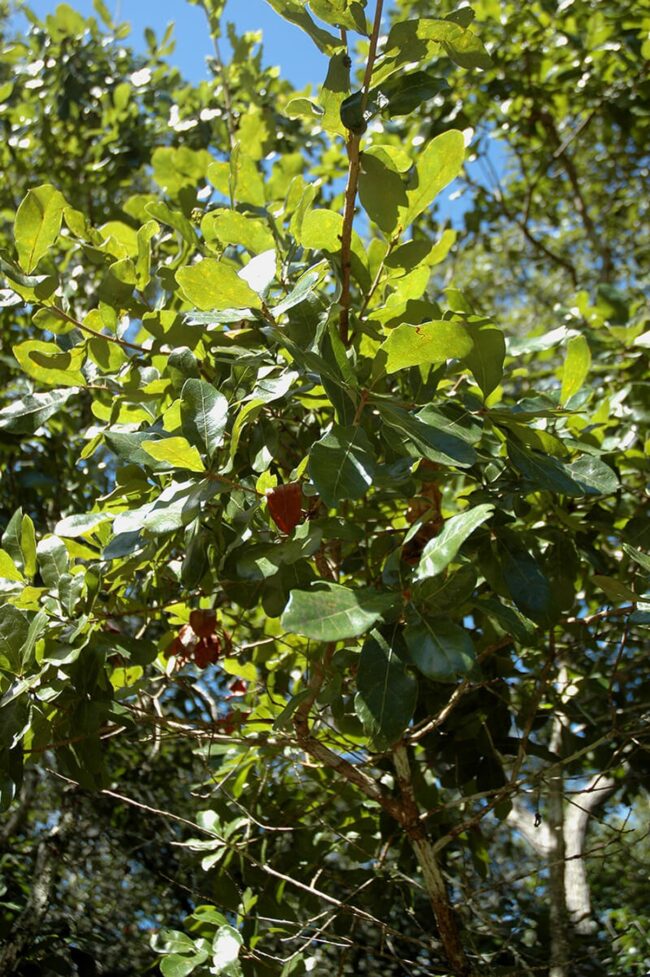
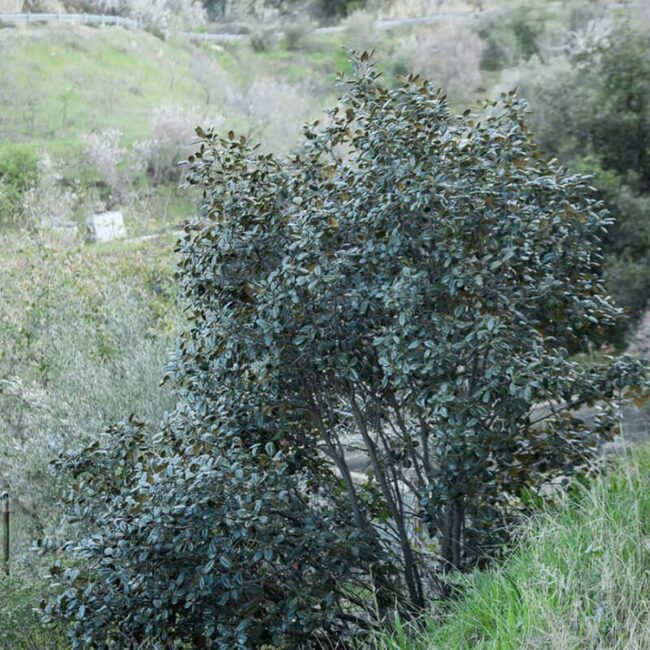
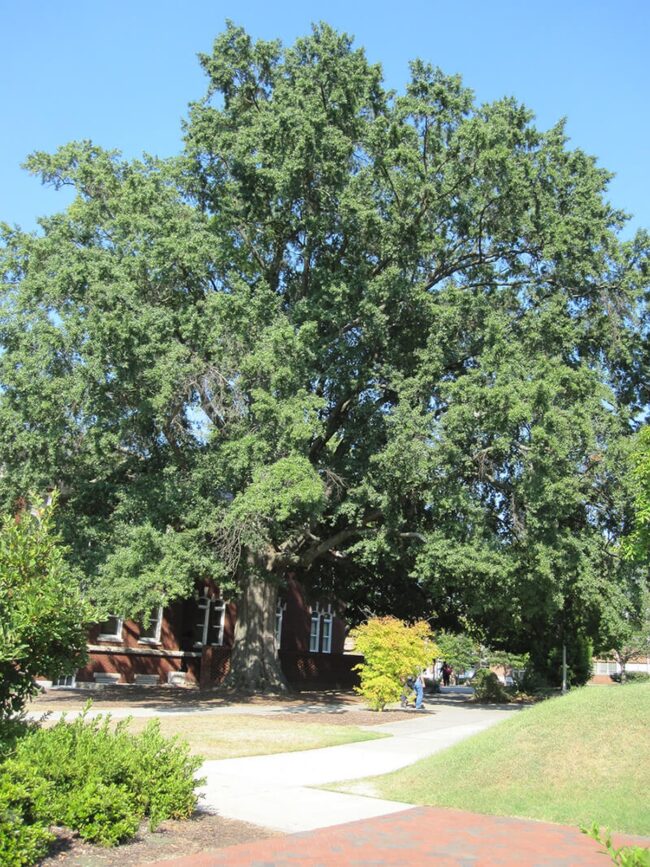
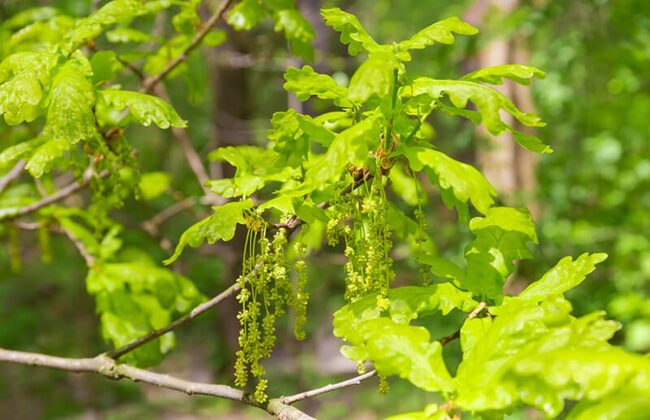
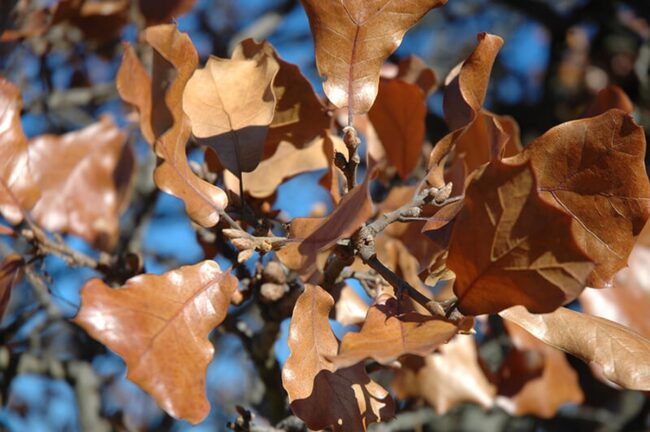
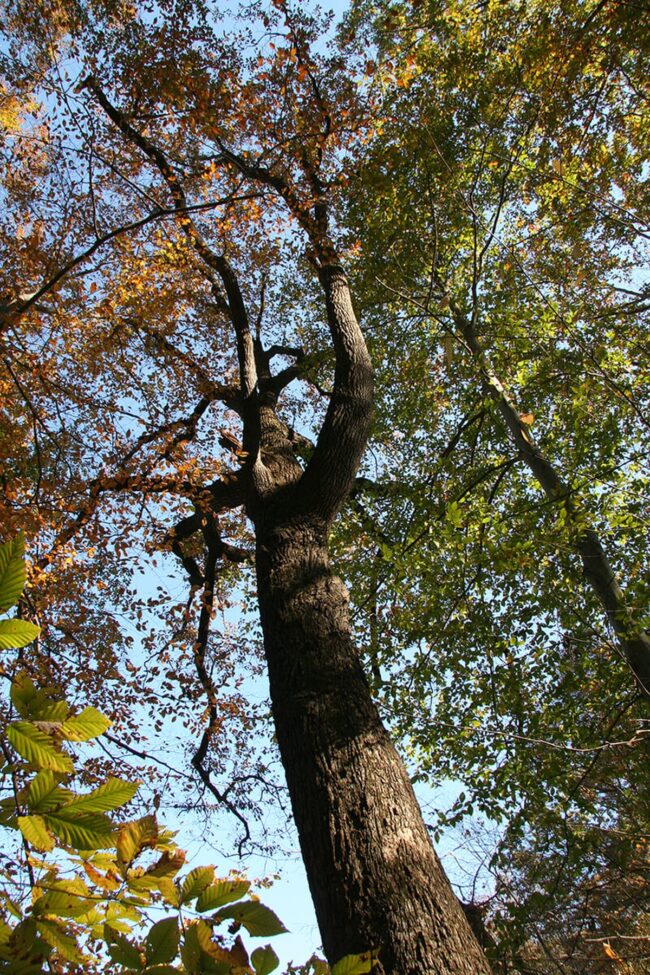
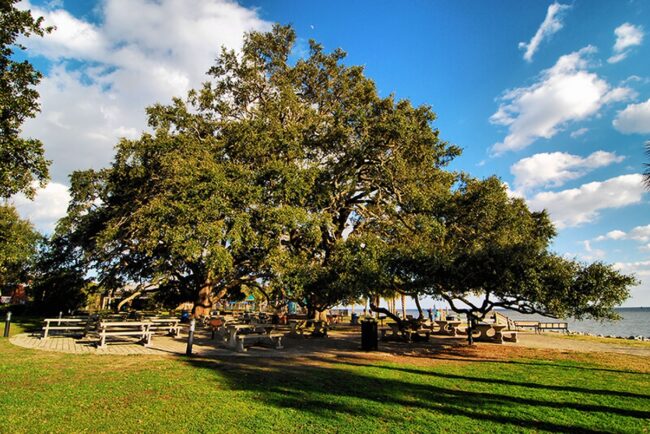
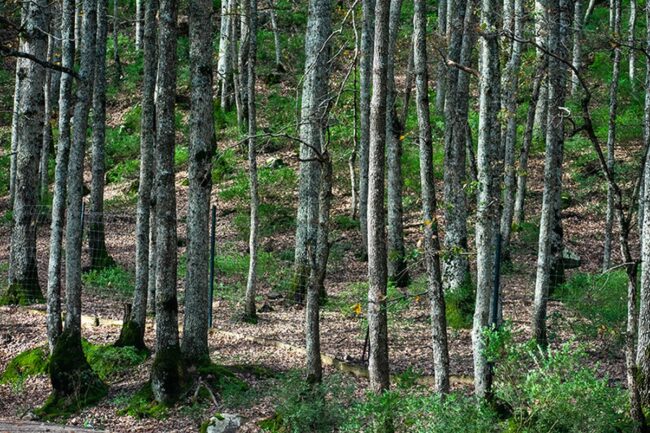
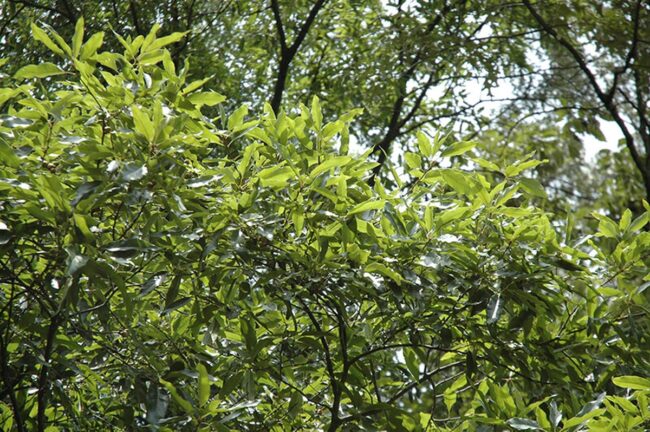
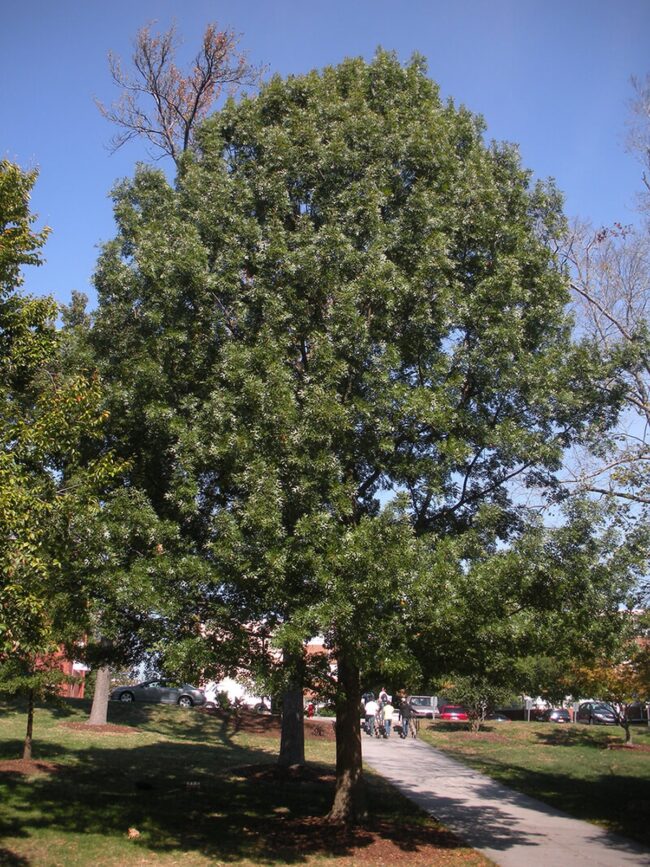
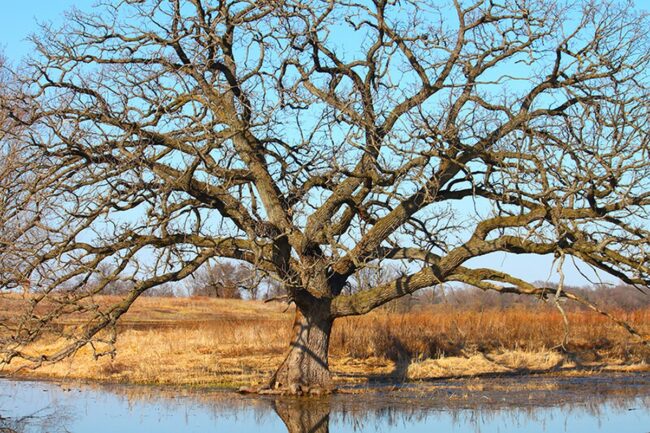
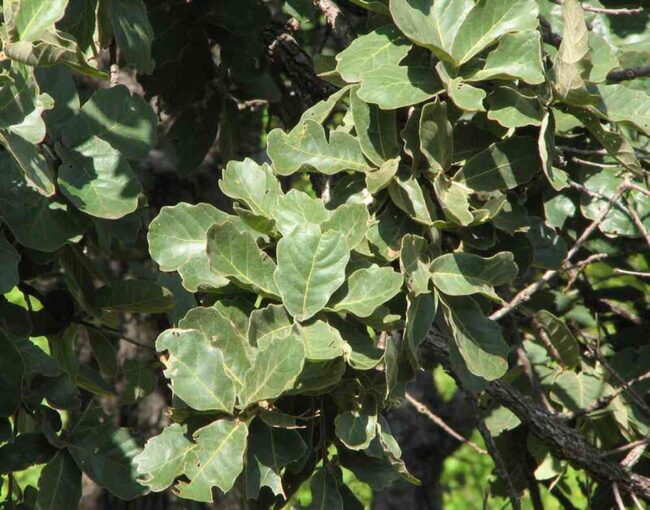
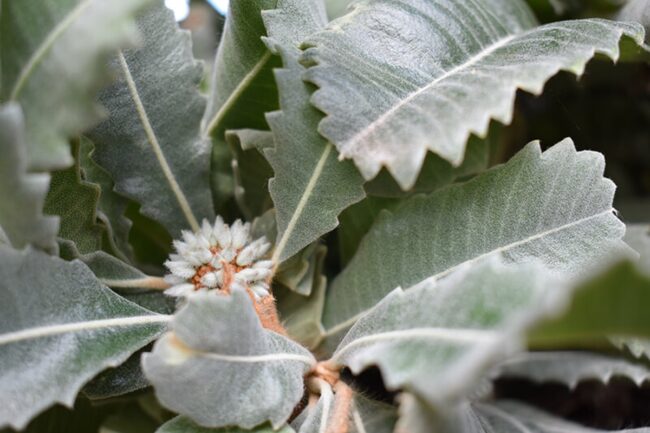
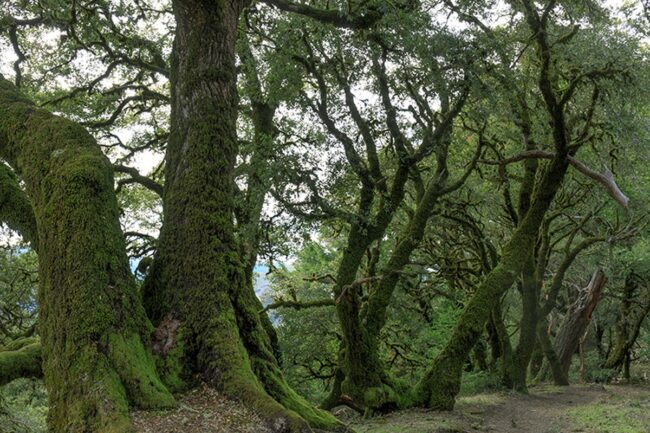
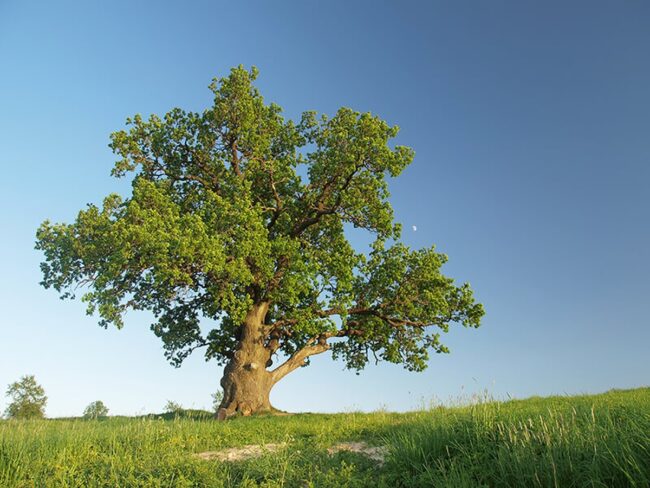
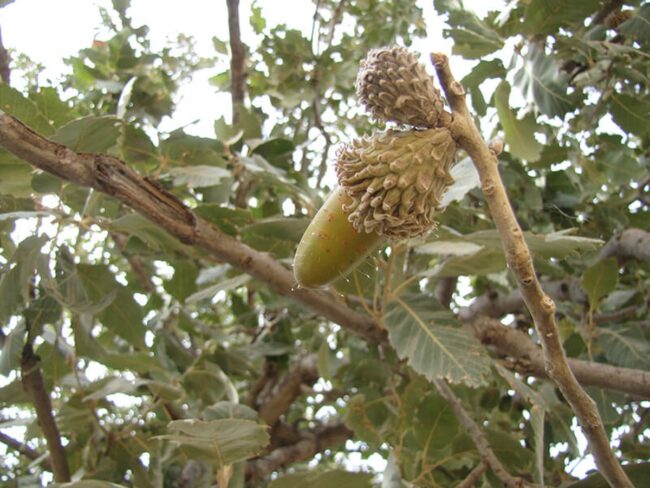
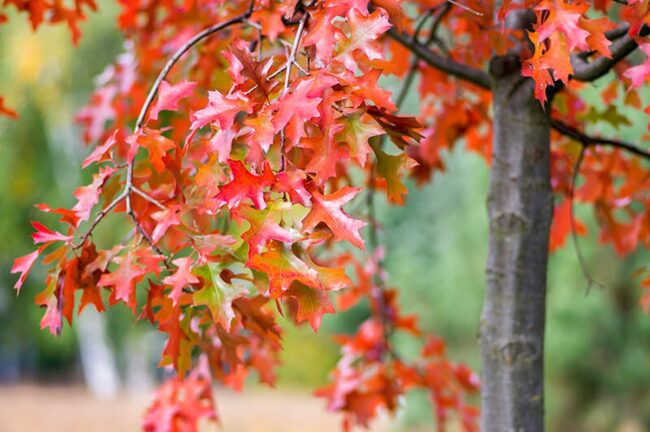
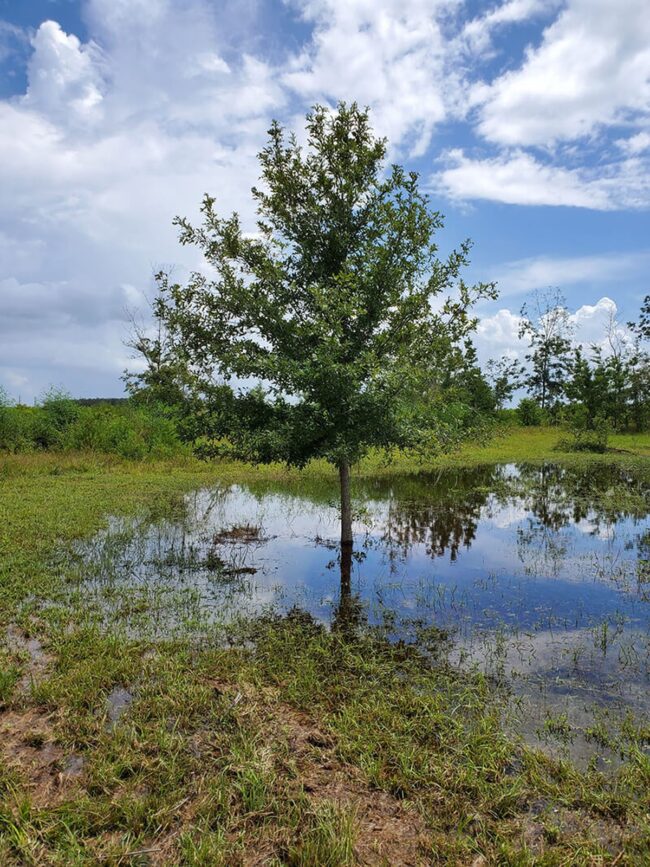
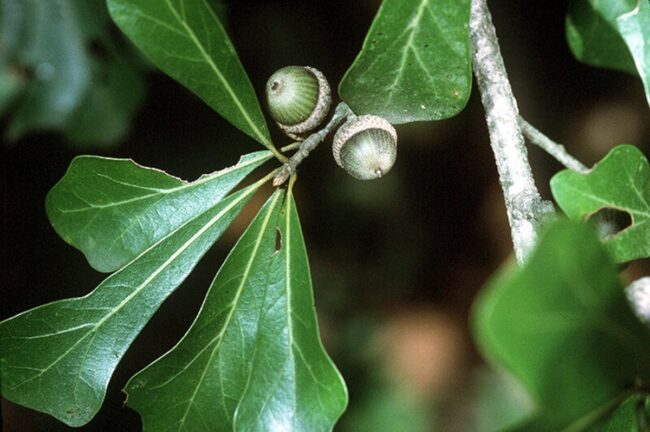
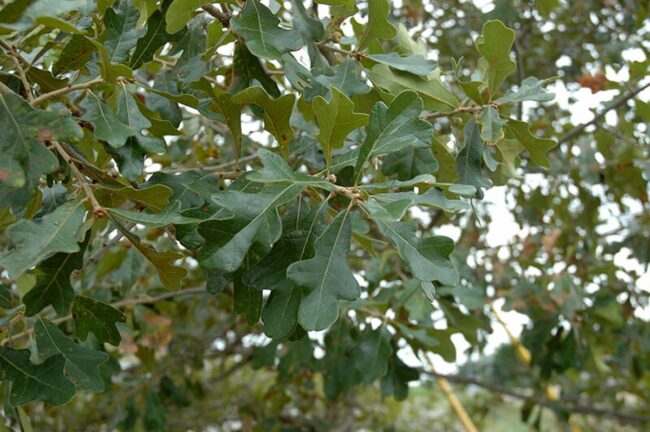
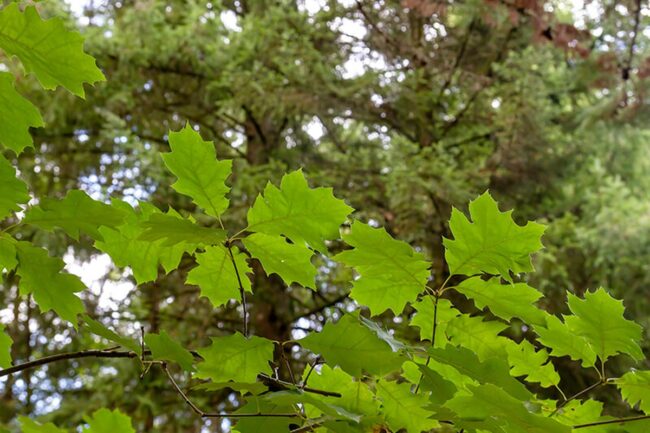
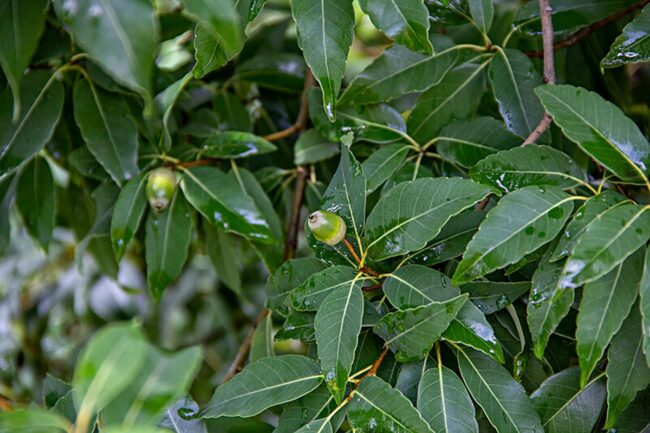
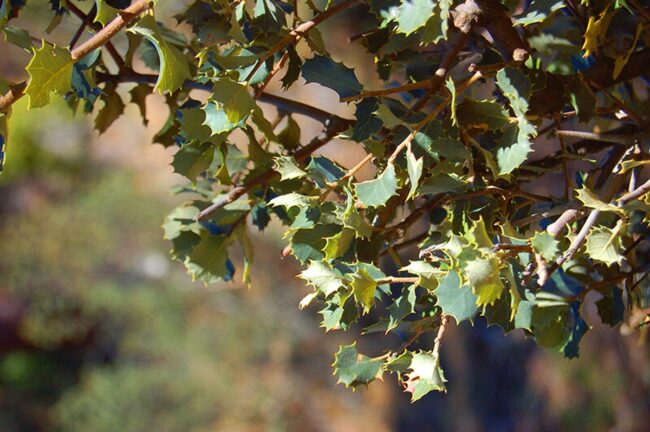
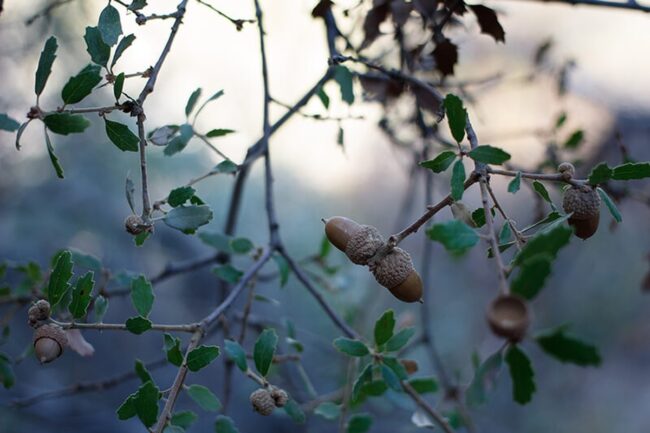
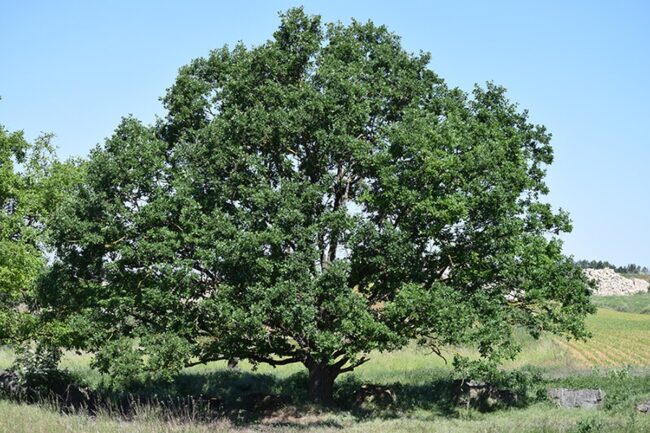
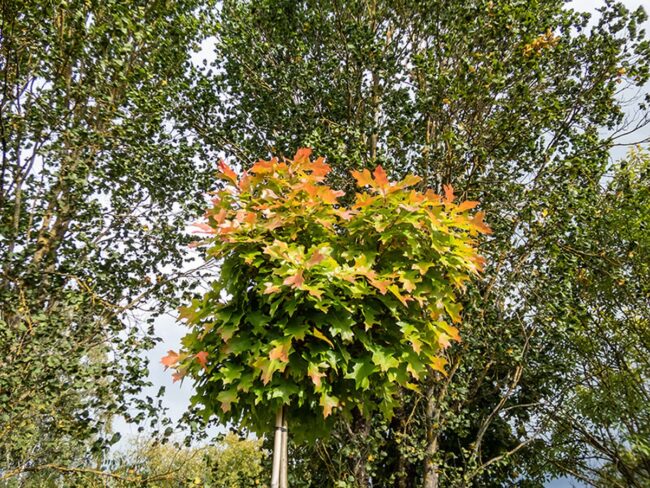
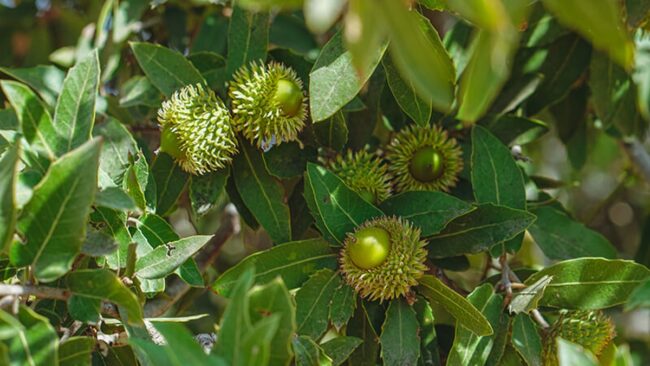
Liam Patel
Senior Editor & DIY Craftsman
Expertise
DIY home decor, interior design, budget-friendly styling, sustainable upcycling, creative crafting, editorial writing
Education
Pratt Institute, Brooklyn, NY
Liam Patel is the Senior Editor at Archeworks.org, where he shares creative DIY and home decor ideas. With a degree in Interior Design and years of experience in home styling, Liam focuses on easy, budget-friendly projects that make spaces personal and beautiful.
Liam’s tutorials, styling tips, and affordable solutions help readers design homes they love. He believes decorating is about self-expression and encourages everyone to embrace the joy of creating.